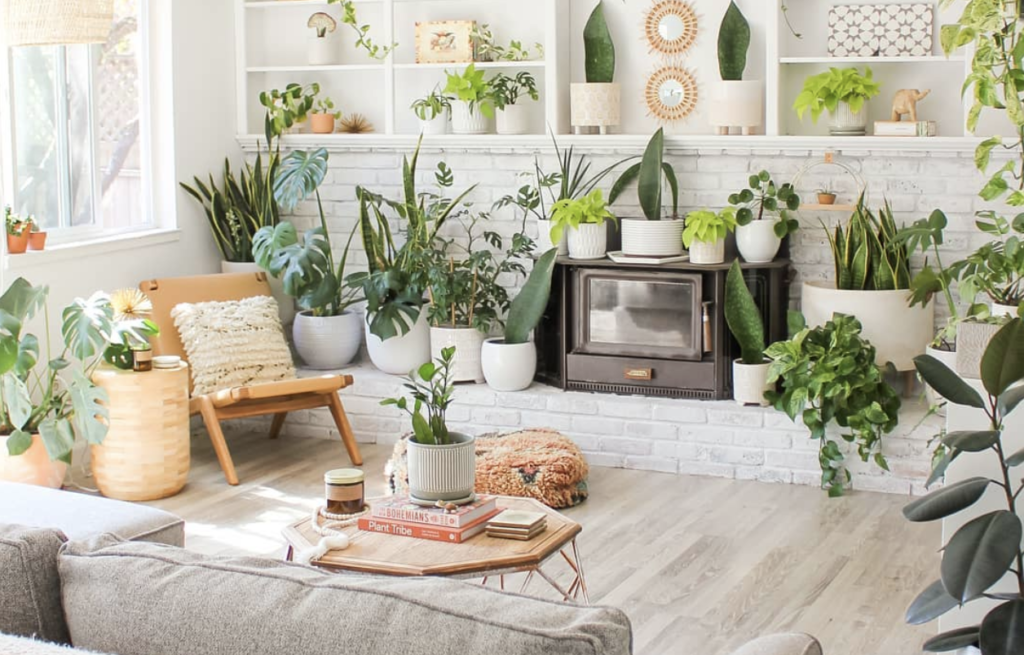Last spring, as the pandemic closed down much of society, people across the world turned to their yards, balconies or any plot of land available for digging in the soil and planting veggies and seeds, while getting some much-needed stress relief. Now, with a new stay-home order and colder temperatures, indoor plants can provide a mood boost and add pops of color to your home. But some of us may feel reluctant to buy plants, which, based on experience, are unlikely to thrive or even survive under our supervision.
“Most people love plants and want them, but have a fear of not succeeding,” said Carlisle Degischer, co-owner of Dragonfly Floral in Healdsburg. But don’t let that fear or guilt from previous bad luck stop you from flexing your green thumb at home, she added.
Houseplants were growing in popularity before the pandemic, especially among younger people. Now that we are spending more time at home, they are in even higher demand according to local nurseries and garden centers. A few simple tips from the experts can help you in your quest to make your home greener.
How to get started
All houseplants are not created equal — that lush and leafy plant trending on social media may not do very well in your living room. Try to set yourself up for success by selecting a hardy, easy-care plant that doesn’t cost a small fortune.
Lindsay Wallstrum, owner of interior plant design firm Leaf + Lolo, recommends first-timers start out small with just one or two plants, like Sansevieria (snake plant) and Pothos. Initial growing success can then provide the confidence boost necessary to up your plant game down the road.
“To me, plant care is a form of self-care so the last thing you want is to be stressed over caring for them,” Wallstrum said. “Once you feel comfortable, you can always add more to your mini jungle!”
“Gardening is like cooking,” said Molly Bockelman, manager at Prickett’s Nursery in Healdsburg, “Everyone does it a little differently.” When bringing a new plant home, she recommends letting it acclimate in the spot where you plan on placing it for at least a week before transplanting it into a bigger or nicer pot.

Don’t drown your plants
Over-watering is one of the most common ways to kill a houseplant. Before giving plants a drink, Wallstrum recommends plant newbies perform the “finger test.” Stick your finger several inches into the soil. If soil sticks to your finger, wait a couple of days and try the test again. When your finger comes up dry, with no soil, you know it’s time to water.
Bockelman says first-timers also need to remember that plants in bigger pots require less watering since more soil retains more water. She also encourages people to consult the staff at their local nursery and not be shy about asking questions.

Design with plants
Houseplants offer an easy and affordable way to change the look of a room. But if you want your plants to thrive, you have to take sunlight — or lack thereof — into consideration. That dark corner in your living room may be crying for a pick-me-up but if there’s no light, you’re setting yourself up for growing pains.
Decorative pots can add color and texture to a space. Wallstrum recommends using a favorite chair and some plants to create a “zen space where you can read, relax and take in the serenity.” She’s also a fan of trailing plants along the wall.
Along with making you space look better, studies also have shown that indoor plants help purify air and lower stress.
Don’t beat yourself up and don’t give up
Growing houseplants comes with a learning curve. So, if you give it a go and you don’t succeed, just try again.
“Houseplants should bring you joy, never guilt,” said Degischer. “As soon as it brings you any emotions other than joy, release yourself from it and compost it. Move on. It’s OK.”
















